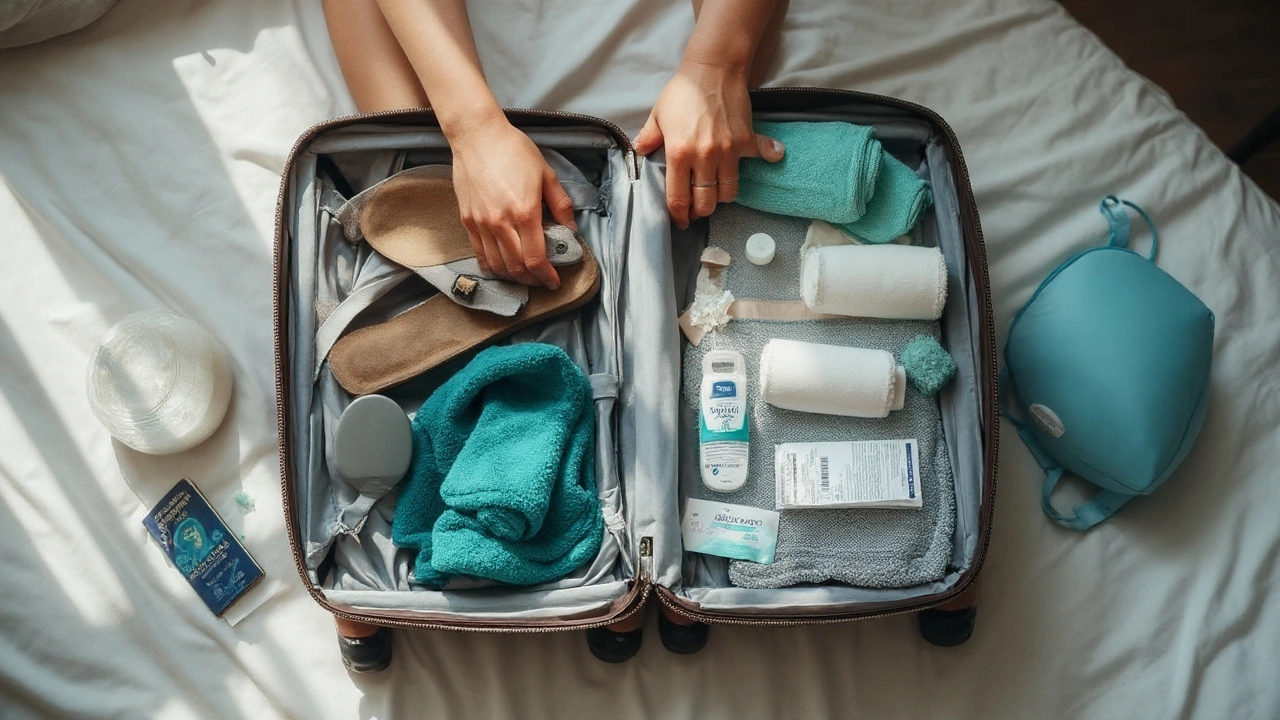Best Ringworm Prevention Strategies for Travelers: Practical 2025 Guide
Skip the itch on the road. A practical 2025 guide to prevent ringworm while traveling: gear to pack, daily habits, what to do after exposure, and quick fixes.
Continue ReadingEver wonder why a sweaty gym locker room feels like a perfect breeding ground for skin problems? That’s because tinea fungi love warm, moist places. The good news is you can shut the door on them with everyday habits that take only a few minutes.
First up, keep your skin dry. After showering or swimming, pat yourself dry instead of rubbing – especially between toes and in groin folds where moisture hides. Change out of damp clothes right away; a sweaty shirt left on for hours is an invitation for spores.
Second, wash your hands often. A quick soap‑and‑water routine after touching pets, handling laundry, or using public equipment cuts down the chance of spreading fungus to other parts of your body.
Third, don’t share personal items. Towels, razors, shoes, and even socks can carry fungal particles. If you must use a shared towel at the gym, bring your own and toss it in the laundry as soon as you’re done.
Fourth, choose breathable footwear. Sneakers made of canvas or mesh let air flow, while rubber boots trap sweat. Rotate shoes every day and give them time to dry out completely before wearing them again.
If you spend a lot of time in locker rooms, showers, or swimming pools, wear flip‑flops or shower shoes. They create a barrier between your feet and the floor where fungi love to linger.
For pet owners, remember that animals can carry tinea too. Bathe dogs and cats regularly, and wash their bedding often. If you notice hair loss or scaly patches on your pet, ask the vet – it could be a sign of ringworm.
Cleaning surfaces is easier than you think. A simple spray of diluted bleach (one part bleach to nine parts water) on gym mats, bathroom tiles, and shower curtains kills spores fast. Let the solution sit for a few minutes before wiping clean.
When traveling, pack an extra pair of socks and keep them in your luggage instead of the shoe compartment. This prevents sweaty feet from contaminating other clothes.
If you spot a red, itchy patch that looks like a ring, act fast. Over‑the‑counter antifungal creams work well for early cases, but don’t wait too long – the fungus can spread under the skin if ignored.
Finally, know when to call a professional. If a rash doesn’t improve after two weeks of home treatment, or if it spreads quickly, see a doctor. Prescription pills may be needed for stubborn infections.
Bottom line: tinea thrives on moisture, heat, and shared items. By drying off promptly, keeping personal gear to yourself, and cleaning high‑risk areas, you take away the fungus’s favorite hangouts. Follow these simple steps and you’ll stay one step ahead of ringworm without any hassle.

Skip the itch on the road. A practical 2025 guide to prevent ringworm while traveling: gear to pack, daily habits, what to do after exposure, and quick fixes.
Continue Reading